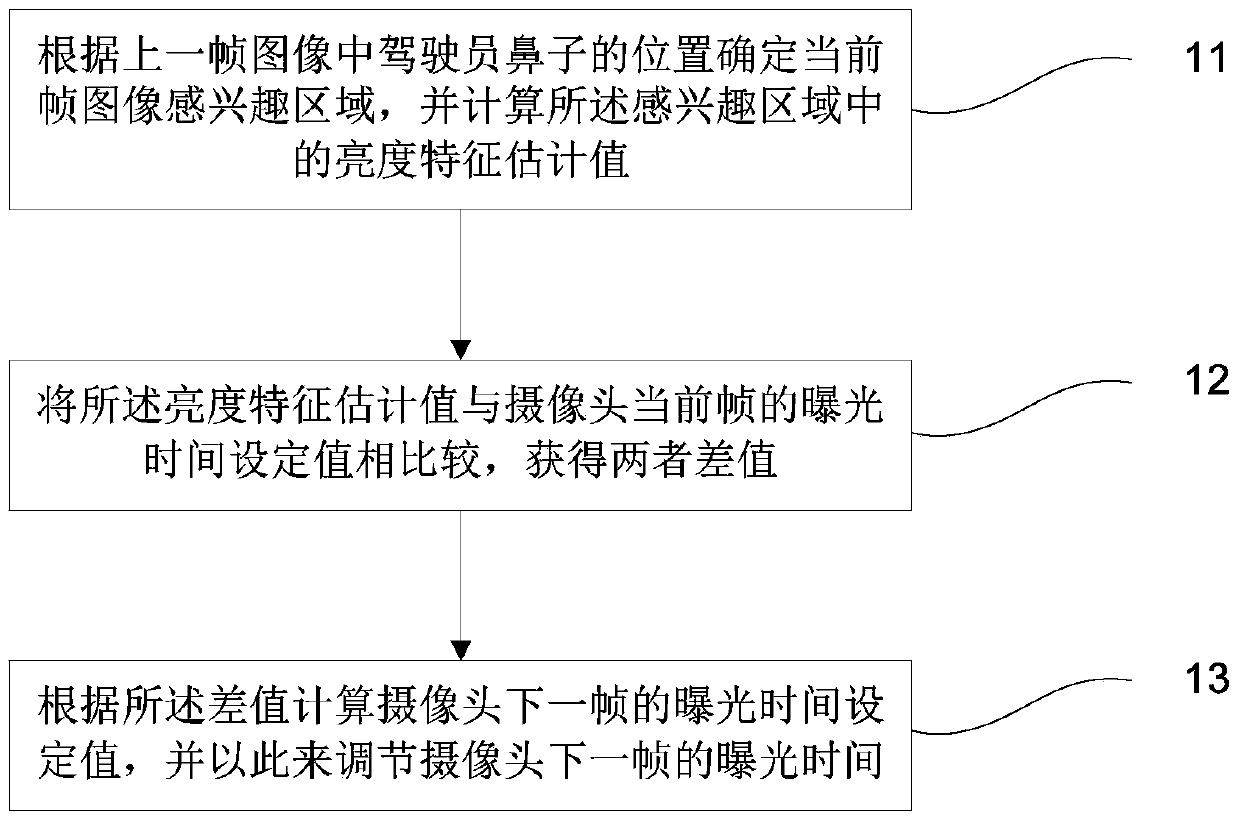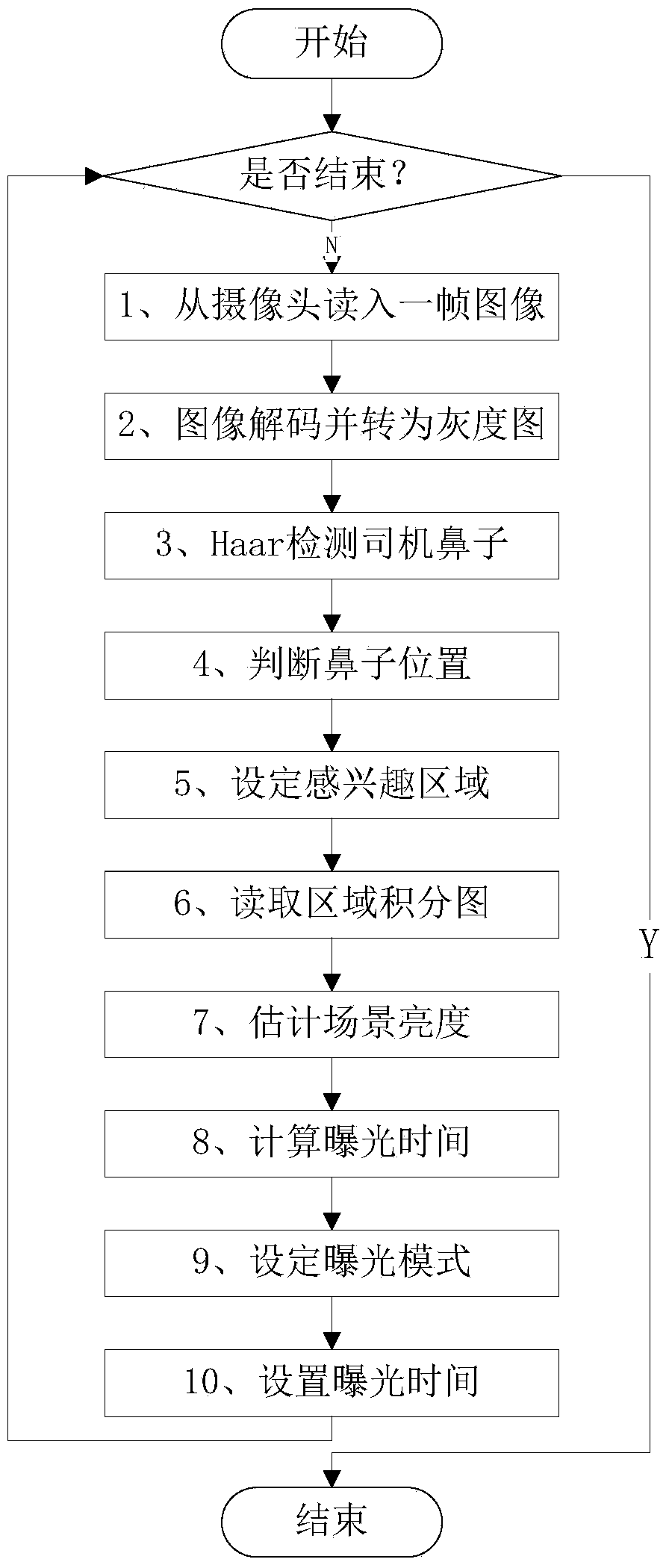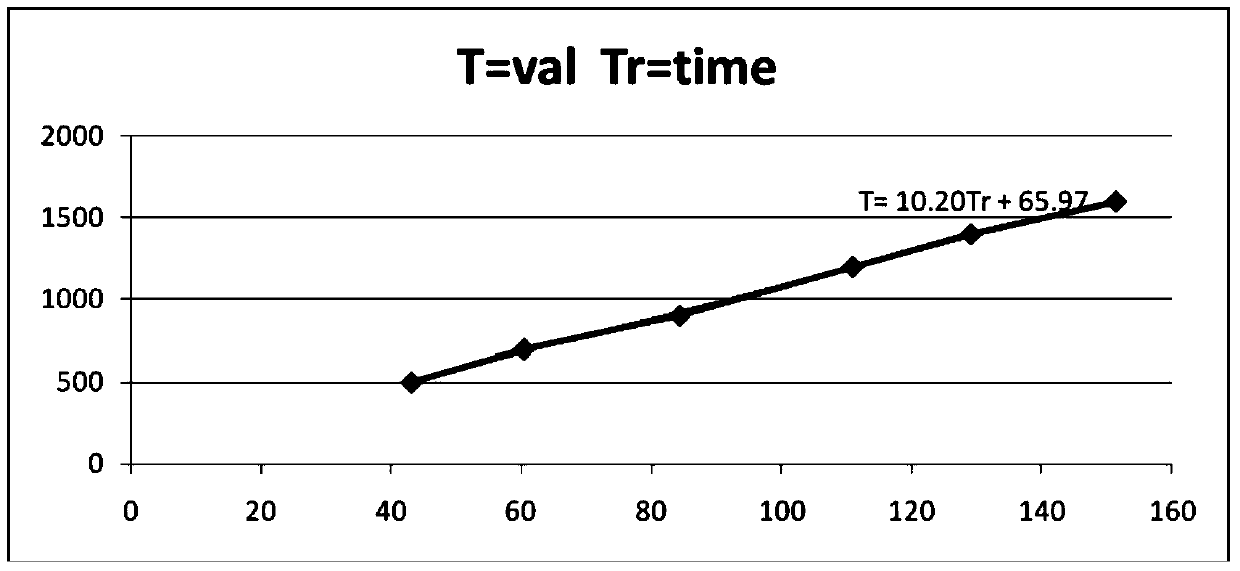Method for adjusting exposure time of camera
A technology of exposure time and adjustment method, applied in the field of intelligent transportation, can solve the problems of inability to adjust brightness and poor exposure effect, and achieve the effect of avoiding gray value changes and accurate exposure time.
- Summary
- Abstract
- Description
- Claims
- Application Information
AI Technical Summary
Problems solved by technology
Method used
Image
Examples
Embodiment 1
[0024] figure 1 It is a flow chart of a method for adjusting the exposure time of a camera provided by Embodiment 1 of the present invention. Such as figure 1 As shown, the method mainly includes the following steps:
[0025] Step 11. Determine the region of interest in the current frame image according to the position of the driver's nose in the previous frame image, and calculate the brightness feature estimation value in the region of interest.
[0026] In the embodiment of the present invention, the determination of the brightness of the image needs to calculate the gray value of a specific area, so it is necessary to select a suitable area in the image for calculation, and this area is called the area of interest. In addition, the scene in the car is relatively complex. In addition to the brightness change of the scene, the change of the driver's driving posture will also cause the change of the gray value in the selected area. Therefore, the position of the region o...
Embodiment 2
[0071] In order to facilitate understanding of the present invention, below in conjunction with Figure 2-3 for further clarification.
[0072] Such as figure 2 As shown, it is a flowchart of a method for adjusting the exposure time of a camera provided by the present invention, which mainly includes:
[0073] 1) Read in images from a USB camera.
[0074] 2) Decode the read image into an RGB three-channel image, and then convert it into a grayscale image.
[0075] 3) Use the trained Haar classifier to detect the driver's nose, mainly including: calculating the integral map of the region of interest, calculating the Haar feature according to the integral map, and then using the classifier to detect the position of the nose.
[0076] 4) Determine whether the detected nose position is near the reference position.
[0077] 5) According to the detected nose position, expand the nose area outward as the region of interest.
[0078] 6) Read the integral image during Haar detect...
PUM
 Login to View More
Login to View More Abstract
Description
Claims
Application Information
 Login to View More
Login to View More - Generate Ideas
- Intellectual Property
- Life Sciences
- Materials
- Tech Scout
- Unparalleled Data Quality
- Higher Quality Content
- 60% Fewer Hallucinations
Browse by: Latest US Patents, China's latest patents, Technical Efficacy Thesaurus, Application Domain, Technology Topic, Popular Technical Reports.
© 2025 PatSnap. All rights reserved.Legal|Privacy policy|Modern Slavery Act Transparency Statement|Sitemap|About US| Contact US: help@patsnap.com



